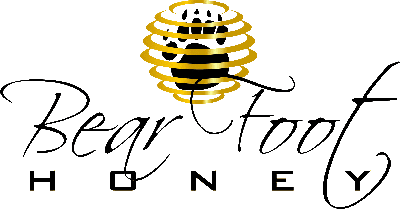Beekeeping Resource Manual
Per request we are making available the documents that were given out at our Beginining Beekeeping Classes. Those documents include of the Beekeeping Resource Manual in two parts, and the Hive Maintenance Information & Checklists. Click links below to Download.
Beekeeping Resource Manual Part 1 of 2
Beekeeping Resource Manual Part 2 of 2
Quarterly Hive Maintenance
Jan – March (1st
Quarter)
·
Artificial Feed
(If needed) 1:1 ratio (1 part Cane Sugar to 1 part Water - by weight)
·
Varroa Mite
Treatment
(Only if using Powdered sugar dust method…once every 10 days for a period of 40 days)
(Only if using Powdered sugar dust method…once every 10 days for a period of 40 days)
·
Tracheal Mite
Treatment - Shortening & Powdered Sugar Patties
·
Mega Bee or other
Pollen Pattie Substitute
·
Nosema Apis &
Nosema Ceranae Treatment – Fumagilin-B
April – June (2nd
Quarter)
·
Varroa Mite
Treatment
(if using Powdered sugar dust once every 10 days for a period of 40 days)
(May 1st : If Using “Apiguard” {gel based thymol} place 50 grams on 3x5 card on top bars of highest brood frames and insert wood bound excluder on hive for “Apiguard” to breath, leave in hive for 2 weeks and repeat May 15th )
(if using Powdered sugar dust once every 10 days for a period of 40 days)
(May 1st : If Using “Apiguard” {gel based thymol} place 50 grams on 3x5 card on top bars of highest brood frames and insert wood bound excluder on hive for “Apiguard” to breath, leave in hive for 2 weeks and repeat May 15th )
·
Tracheal Mite
Treatment - Shortening & Powdered Sugar Patties
July – September (3rd
Quarter)
·
Varroa Mite
Treatment
(if using Powdered sugar dust once every 10 days for a period of 40 days)
(August 1st : If Using “Apiguard” {gel based thymol} place 50 grams on 3x5 card on top bars of brood frames and insert wood bound excluder on hive for “Apiguard” to breath, leave in hive for 2 weeks and repeat August 15th)
(if using Powdered sugar dust once every 10 days for a period of 40 days)
(August 1st : If Using “Apiguard” {gel based thymol} place 50 grams on 3x5 card on top bars of brood frames and insert wood bound excluder on hive for “Apiguard” to breath, leave in hive for 2 weeks and repeat August 15th)
·
Tracheal Mite
Treatment - Shortening & Powdered Sugar Patties
·
Artificial Feed
(Only if needed) 2:1 ratio
·
Harvest 40% of
Honey (from Supers only & only if the girls can afford it)
October – December
(4th Quarter)
·
Artificial Feed
(If needed) 2:1 ratio (2 parts Cane Sugar to 1 part Water - by weight)
·
Nosema Apis &
Nosema Ceranae Treatment – Fumagilin-B (October)
·
Wrap hive using
15# tar paper and staple gun – 80 inches long x height of hive
·
Winterize Hive
Hive Checklist Form
Process of Hive Inspection
Open hive & observe what you see
Remove 2nd to outside frame (#9 or #2 frame) to provide working space
Note: Remember hive is a 3 balloon configuration with frames slicing though talked about in class)
Feed hive (if necessary) Early Spring 1:1 weight of cane to sugar ratio or Fall 2:1 weight of cane to sugar ratio
Checking Brood: Look at the completeness of the brood pattern. Observe if the brood is Worker or Drone. (Drone brood is okay if originated from drone comb)
Observe if Queen Cells are present in hive as talked about in class
ALL CAPPED BROOD should be domed or convex in appearance
LATE SUMMER/FALL: Brood should NOT be widely scattered. Widely scatted brood may indicate Varroa mite damage. As discussed in class.
Note: If mitecide was used pull out application strip and discard (do not forget about using gloves during process)
Checking Pollen: Normally in N. California pollen is available to the bees almost year round. Note: ½ tsp of pollen in needed to rear a honey bee…lifetime.
Note: Pollen gathered from Local Buckeye Trees, Azalea Trees, and Rhododendron Bush is Toxic to the brood bees.
When pollen appears lacking, pollen substitute may be fed. BFHF recommends Mega Bee. Some pollens are more nutritious than others.
Checking Honey: The weight of the hive should increase during the Spring & Summer and adequate honey stores (Ex: on a 10 frame hive with 8 frames of honey bees should have 30-45 lbs of honey to get through the winter.)
Additional Notes
If a honey excluder was used during the summer it can be
removed for winter storage.
Hives do better when entrance is faced East to South and
when out of the wind.
Hives should have a rain cover which can also serve as a
summer shade.
Hives should be tinted forward so that rain water does not
run to the back of the hive.
If in skunk country hives should be 8” to 12” off the ground
Early Spring / Fall & Winter use of entrance reducer is
recommended.
To do suppering, care of boxes, care of honey, disease
treatment, harvesting the honey surplus)

